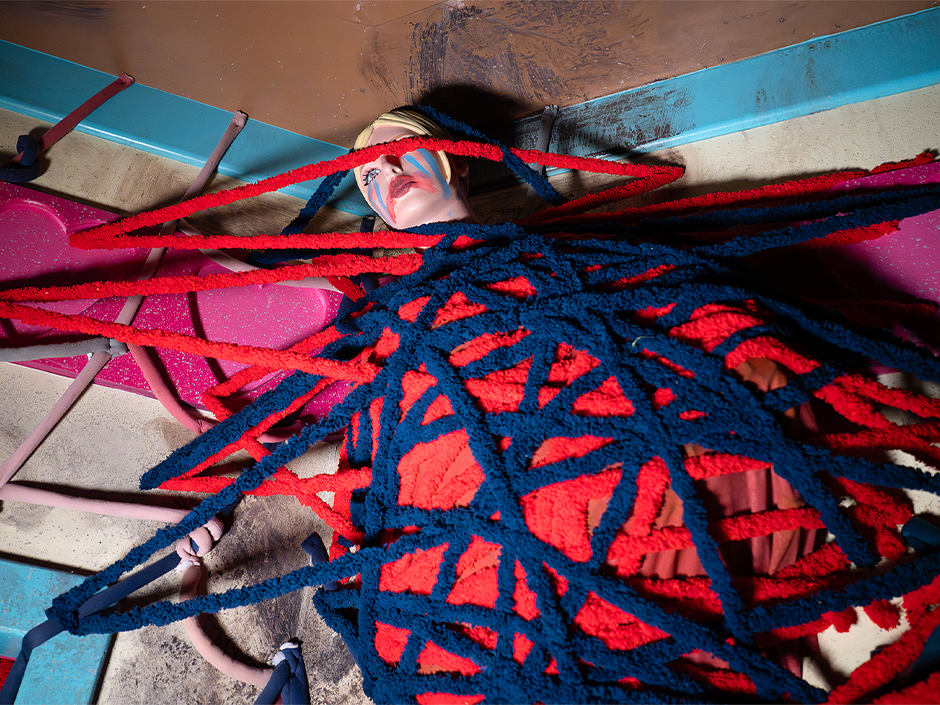
Long before the first scream rips through Universal Studios Florida during Halloween Horror Nights (HHN), our scenic design and scenic decor teams are already hard at work turning concept into terrifying reality.
In one of this year’s original content haunted houses, Dolls: Let’s Play Dead, guests discover something isn’t right inside the attic of a little girl named Lyla. Her teddy bears are torn apart. Her dolls are melted. And her imagination? It’s gone somewhere dark. You shrink down to the size of a toy and step into Lyla’s dollhouse, where you’ll enter the horrifying world she’s created.
Scenic Design in Action
Every haunted house at HHN begins with a creative intent (CI), which is a scene-by-scene breakdown of the story. The CI document outlines what happens in each scene, what the Scareactors will be doing and the overall atmosphere of the house.
Once the CI is approved, members of the scenic design team, such as senior scenic designer Chris McKinney, step in.
“Typically, the show director and scenic designer get together once they have a general, broad concept for a house,” Chris says. “Then, we take that idea and distill it down, scene by scene, until we have an overall narrative for the house.”
From there, the scenic design team creates construction drawings and 3D models to develop the visual concept for every room, down to the height of each wall. These models guide the layout and flow of the house and serve as the blueprint for the scenic decor team, who complete the story with props and set dressing.
“As a scenic designer, I spend a lot of my time doing drawings and documentation,” Chris says. “It’s a total pleasure to be able to work with the [scenic] decor crew, who spend the majority of their time in the field getting their hands dirty and building the things that I put on paper. It’s fascinating to learn about the different materials and processes that they use to create such incredible decor.”
The Disturbing Details: The Role of Scenic Decor
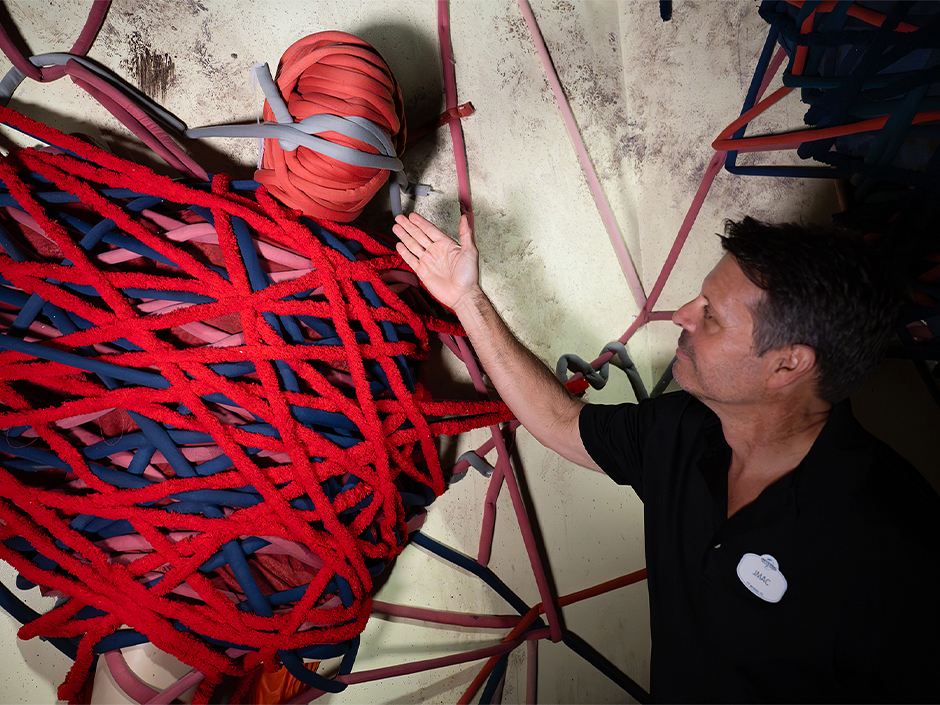
Once the walls are up and painted, the scenic decor team takes over. This group includes artists, fabricators and field specialists who transform empty spaces into immersive environments with props, furniture and custom creations. One of the talented members of this team includes Jamie Hewett, art manager.
“We’re executing the design that has been handed to us by the designers,” Jamie says. “We go to the warehouse and see what we have in inventory, then start shopping, sourcing and finding what it is we’re going to need.”
Every detail inside the house is planted by this team. Within the warehouse, they keep a a collection of mannequins and latex props used across years of HHN. For Jeff “JMac” McDonald, art manager, reusing this decor is one of the coolest parts of the job.
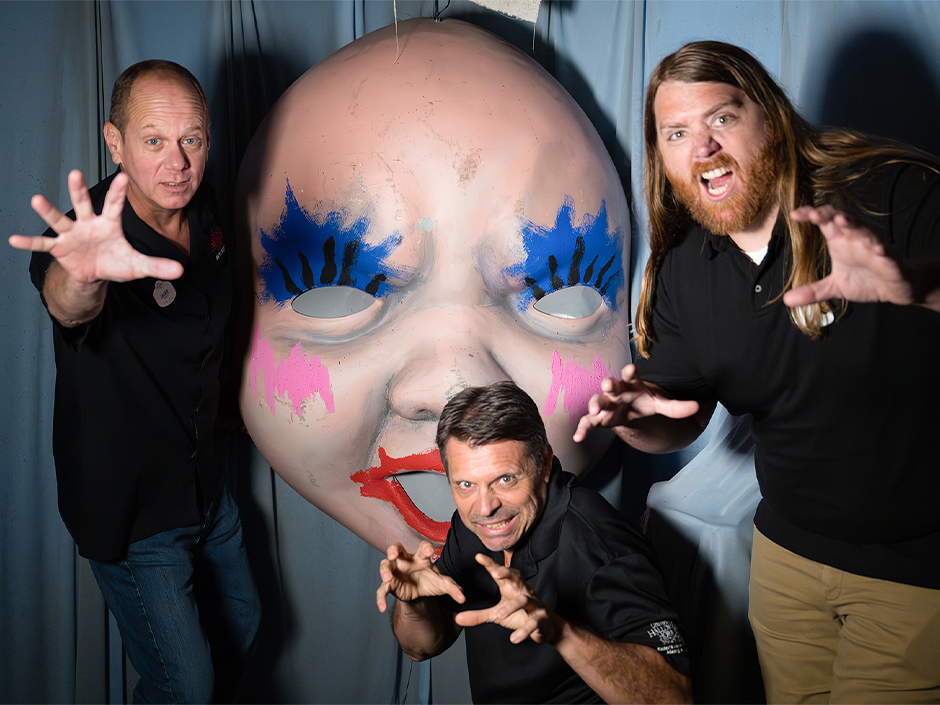
“We have a piece further on in the maze that we used from a house we did in 2014 called Dollhouse of the Damned,” Jeff shares, when asked what his favorite part of the house is. “It’s a giant baby doll face that we’ve had for years, and we found a way to use it in this house this year. I think it looks perfect.”
Problem Solving in the Dollhouse
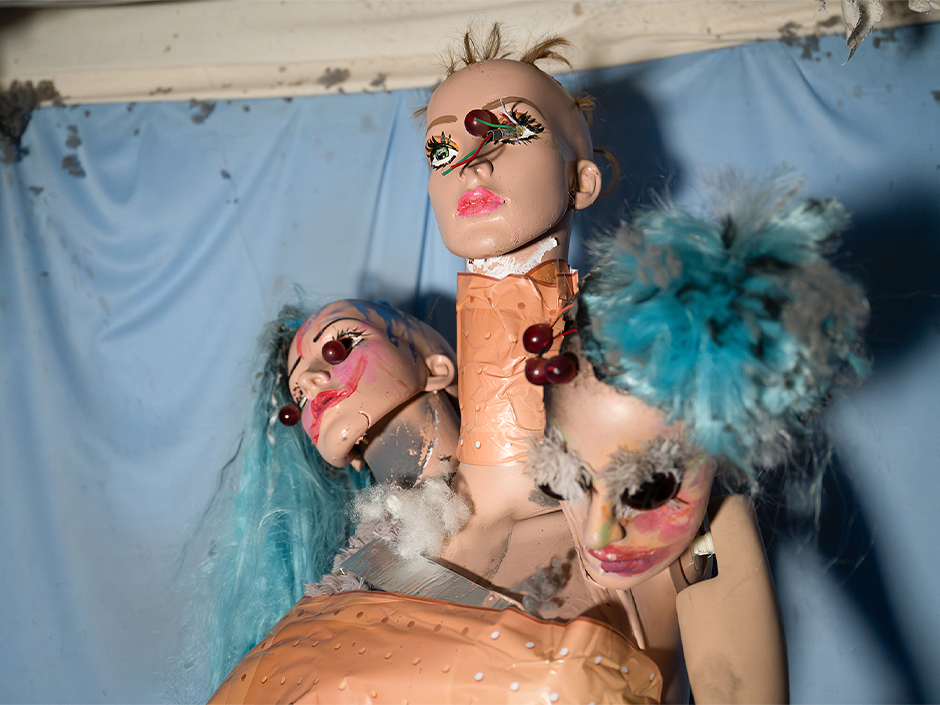
Building a house isn’t just creative — it’s technical. For scenic design, one of the biggest challenges in Dolls: Let’s Play Dead was scale.
“Overall, this house presented a unique challenge in that we are shrinking down to the size of a toy, and we are in this oversized world,” Chris says. “We looked, scenically, for quick visual indicators to tell our guests that they have shrunk down. We use things like oversized bricks, power outlets, screws and other objects to quickly relay that message.”
For the decor team, another challenge was creating the illusion of melting dolls, all without using heat. Instead, they developed a “goo technology” using varied materials to simulate melting effects.
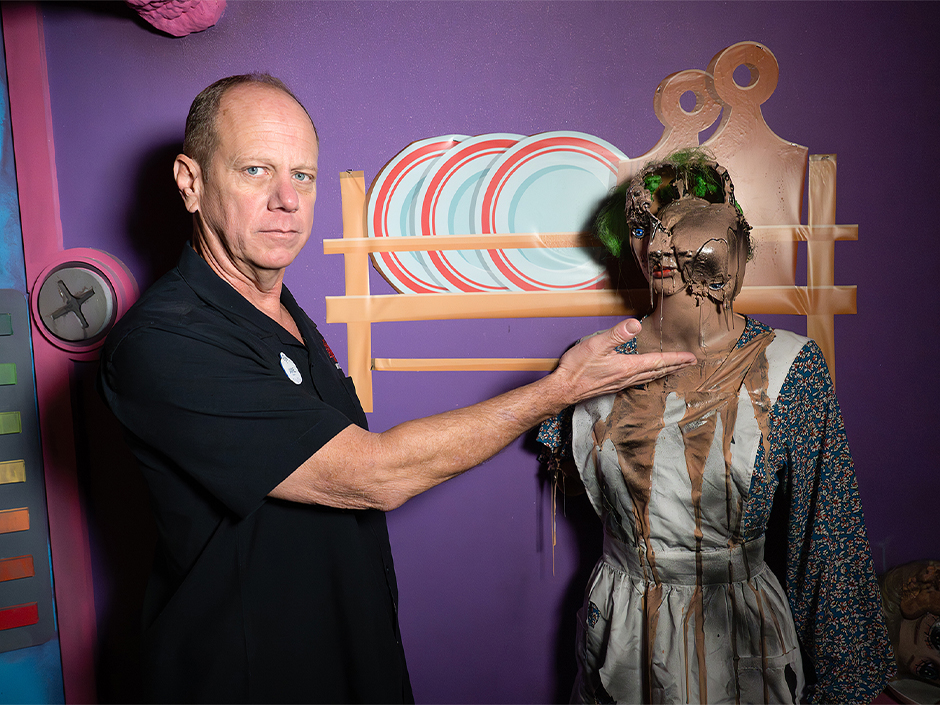
“We are constantly doing stuff like that, research and development, just problem solving, trying to find our ways around things,” says Jamie. “And there’s no book written on how to do this. It would be fun to say, ‘Well, just do what we did last year.’ It just doesn’t work out like that. There are always new problems, new things to be solved and new challenges.”
The Final Phase: Opening Night
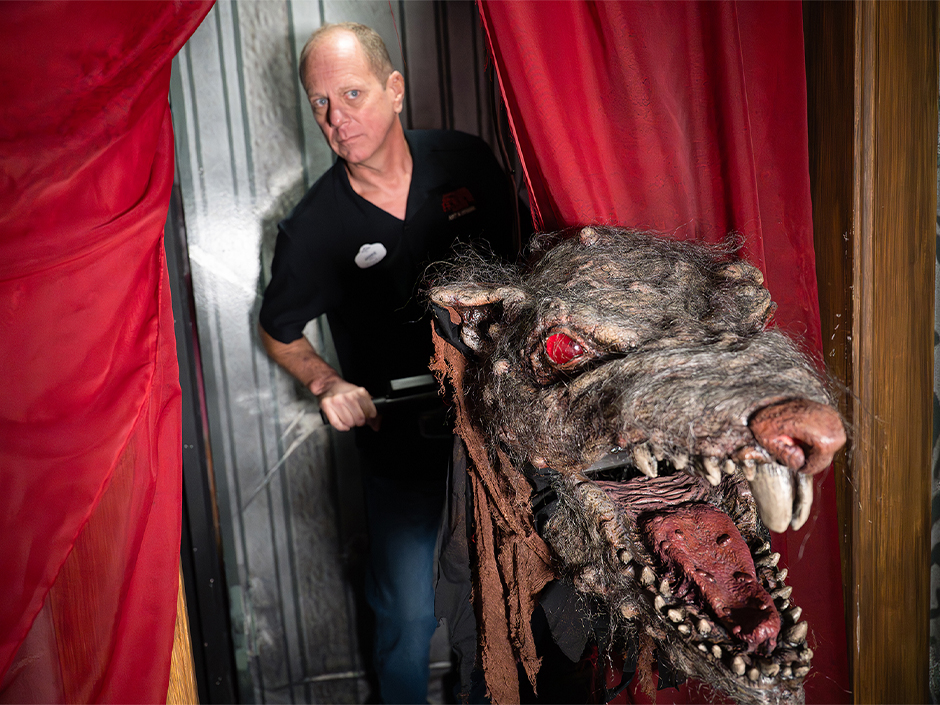
The process of building a house like Dolls: Let’s Play Dead starts more than a year before guests ever walk through it. But when the gates finally open, the payoff is immediate.
“I think my favorite part about my role is when we stand in the streets on opening night and people come through the gates and they say, ‘Wow, look what they did,’” Jamie says. “Knowing that you are a part of ‘they’. That’s the reward.”
Jeff agrees. “When [the teams] get in there, they really tell their stories through their decor and how they put pieces together. And I just really love to see that come together.”
So, as we walk through Lyla’s twisted dollhouse this year, we can all thank the scenic design and scenic decor teams for shrinking us down, creeping us out and showing us all what it means to build horror from the ground up. Their work is more than just scary — it’s storytelling, craftsmanship and collaboration at its finest.
Have you had a chance to experience Dolls: Let’s Play Dead yet? Tell us about your experience in the comments below!
The post Behind-the-Screams | Dolls House at Halloween Horror Nights 2025 appeared first on Discover Universal.






